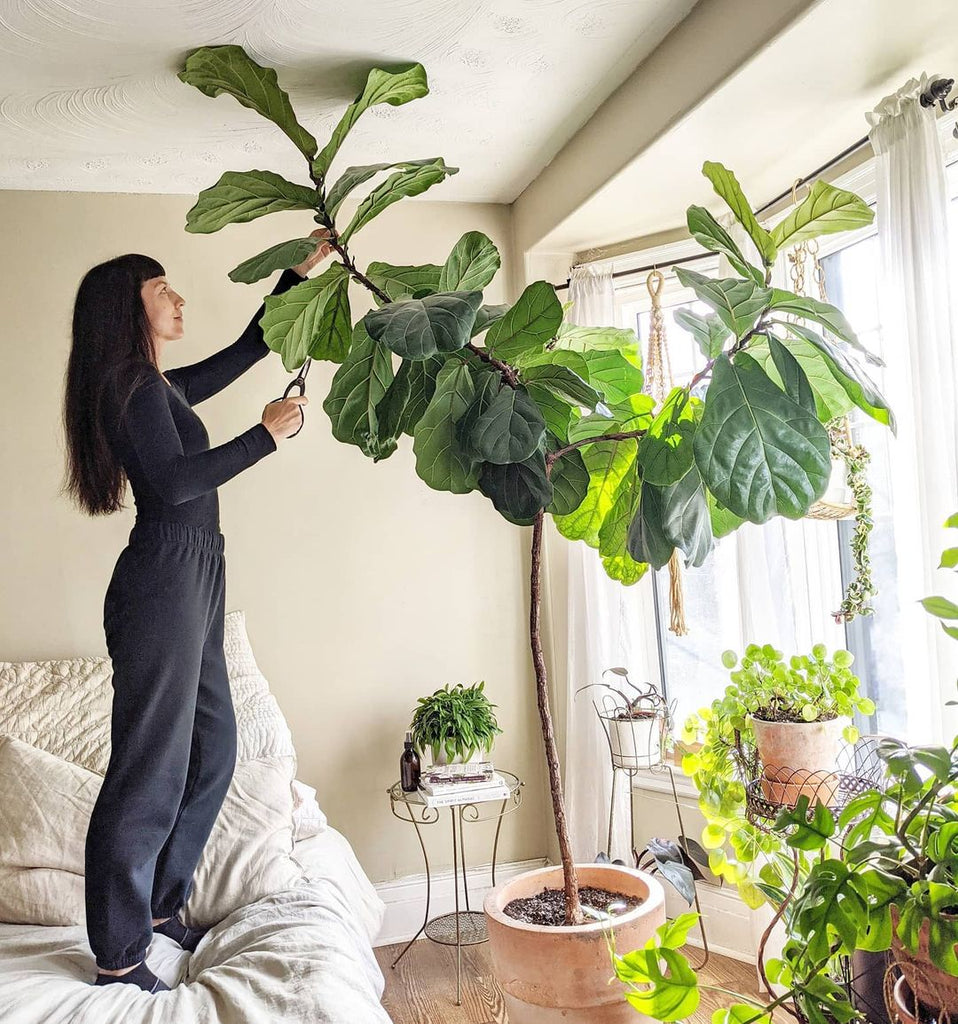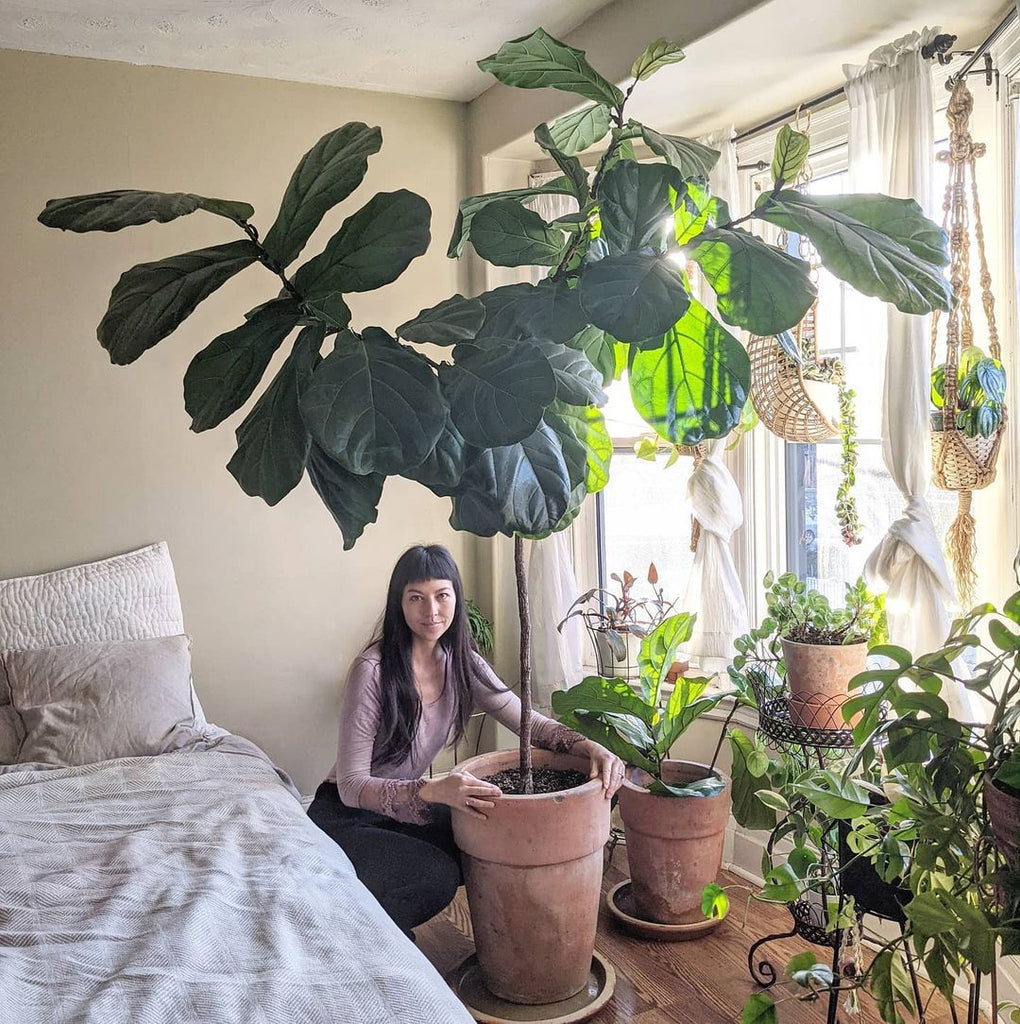The Spring Houseplant Guide
Spring is such a restorative season for me where I really feel the change. Add on surviving a pandemic and being in lockdown, spring couldn’t come sooner for me. I often feel that my houseplants reflect my own winter struggle, where low humidity and less light makes their ability to thrive, or even grow, difficult.
My advice when it comes to transitioning our houseplants into the spring season is pretty similar to how I think we should treat ourselves in the morning— which is a gentle easing into consciousness and reawakening so we can be productive later.
Plants work in tandem with the seasons but since houseplants are indoors, they react a little differently than the ones living outside that will go dormant in the winter. While my houseplants never go into complete dormancy during the winter months, their growth noticeably slows down. Spring is absolutely a season where my little ones perk up and start producing more growth.
Wiping
Spring cleaning is an activity I like to apply to my wardrobe, home and plants. I find taking some time to carefully wipe down leaves gives me the opportunity to assess how the winter has treated my plants. You notice all the small details: How much have they grown? Is there less variegation on the leaves? Are the winter leaves smaller or etiolated? Am I noticing any creepy crawlers lurking in the foliage?
Washing and Watering
If the temperature is tepid enough and warm April showers arrive a bit earlier than expected, take advantage of them! My favorite way to wash and water plants is throwing them outside for a light rain shower.

.
If it’s still too chilly, collect rainwater in buckets and watering cans to use indoors. Fresh rainwater is superior to tap water because it contains less harsh chemicals, salts and minerals than tap water. Using what Mother Nature generously gives us is an excellent way to avoid turning on the tap and conserving water too.
Lighting
I use grow lights during the winter but as the season changes and days become longer, I begin to rely on them less and less. More sunlight means less artificial light (unless your plant is sitting far away from the window) so take the time to reassess how the sun has changed in your space, how long it’s hitting your plants and if adjustments need to be made with where your plants are located.
Pruning
Since I know how good a new haircut can feel in the spring (I just chopped ten inches off), I often feel the same rule applies to my plants that have produced some wonky looking growth.
My first cuts tend to be chopping off etiolated leaves— which is when leaves look unnaturally stretched out (think of the exaggerated face in Edvard Munch’s painting The Scream) because they are searching for more light. I like to propagate these leaves but ones that are crispy, yellow or fall off without force can be tossed.

.
Also, I know sanitization has become a natural reflex for everyone but always remember to sanitize your scissors between cuttings. If your plant has any bugs or diseases, you can transfer this to another plant if you don’t properly wipe shears down with rubbing alcohol.
Repotting
This is probably the most popular advice! Now is the time to think about what plants will be upgraded into a larger pot with fresh soil. Remember, not all plants need to be repotted at the start of spring. I usually check to see what is root bound by looking for runners popping out from the top and bottom of a container.

.
If a plant doesn’t need to be repotted (also worth noting that some plants like to be root bound), I will aerate the growing medium and then add fresh potting soil to the top of the pot, followed by a drink of water.
Propagating
I always encourage propagation if you have healthy cuttings (those etiolated leaves make great plants to propagate). Starting propagation early is great because you can give away a plant that has grown strong roots to friends and family— so they can spend the rest of the summer watching your green gift grow.
Sharing
Warmer months are a great time to swap and share your plants. Unlike the winter months that make it difficult to send plants in the mail (cuttings are often sent with heat packs), warm months make it easy to leave plants on a porch and transport them. Research online groups and communities and see if anyone is organizing a plant swap or giving away free cuttings. Sharing is a great way to grow your plant family in the spring and a wonderful way to make some new friends.

.
Fertilizing
People usually stop fertilizing their houseplants during the winter months, giving them time to rest and conserve their energy for the upcoming growing season. In the spring, you can start slowly easing back into fertilizing.
For me, a way to look at fertilizing in the spring can be likened to having a “dry” alcohol-free month. When your month is over and you start drinking again, usually you try not to overdo it— easing yourself back in. So take baby steps with liquid fertilizing and dilute it to half the strength that is recommended on the bottle to avoid shocking their plants.
Also be sure to pour the watered down fertilizer evenly over the soil with your watering can. I am not a fan of dropping undiluted bombs of fertilizer straight from the bottle directly into the soil.
Experimenting
Real growth always comes from trying something new. Extend this logic to your plants. Plan to try something new! This could mean anything from propagating in Leca or bottom watering your plants. Maybe it’s participating in a plant swap or getting the courage to save up and invest in a plant that is known to be challenging. Spring is a great time to experiment because your plants will be in a better mood to make a comeback if you make some mistakes (which is perfectly normal).








